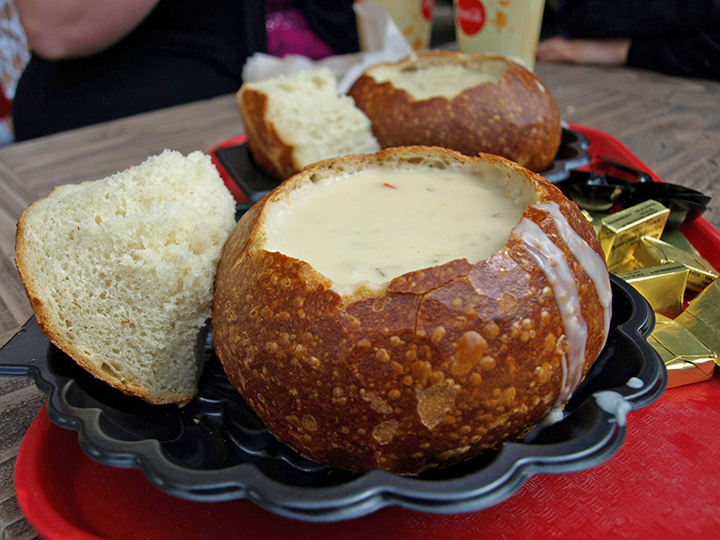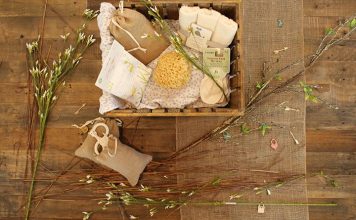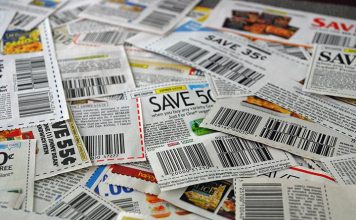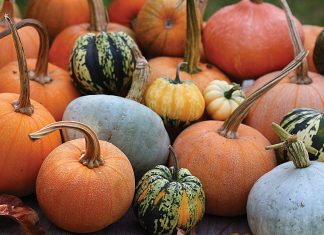 |
|
| Issue #58 • July/August, 1999 |
Congratulations! You’ve worked hard and have enough food stored away to feed your family, possibly for a year or more. Now, go to your store room, pick up every fourth container of food, open it, and throw the food away.
“What are you thinking?” you ask, “I wouldn’t do that!” No, maybe you wouldn’t throw away the food all at one time, but if you throw away leftovers a little at a time, the loss is just the same. And that old adage, “Waste not, want not,” could very well be more than just a trite saying if a disaster should strike.
|
Although leftover is often thought of as not one, but two, four letter words, it is possible with a little thought and planning to turn a leftover into a delicious meal. In fact, a good way to save time and energy is to “cook ahead,” that is, to cook enough at one time so you will have leftovers for another meal. This is especially helpful when you know you are going to have a busy day and won’t have much time for cooking, or if you are tired at the end of a day and cooking is the last thing you want to do. You can even cook ahead when you know you are going to have company so that you will have less time in the kitchen and more time to visit after they arrive.
Some basic rules
1.Store leftovers properly. We all know it is necessary to cool foods quickly and keep them cool so that bacteria do not multiply rapidly. But keeping air out of the food is almost as important as keeping it cool.
Foods set in uncovered dishes in the refrigerator either take on the flavors of other foods or spoil very quickly because air molds settle onto them. Dishes covered with aluminum foil or a stretch wrap are not very air tight, either, and food stored that way in the refrigerator does not keep as well as food stored in containers with tight lids. Stretch wrap seals around the edges, but it is air permeable. Have you ever covered a dish of cantaloupe with stretch wrap or foil only to open the refrigerator a few hours later and been met with a blast of unpleasant melon-scented air? Just think what that does to the rest of the food in the refrigerator. No wonder leftovers have a bad name. The mingling of flavors in the refrigerator doesn’t help leftovers a bit.
|
There are many good storage dishes with tight lids on the market; most of them are expensive, but they are a good investment because they do a good job and they last for years. Of course, some of my best storage dishes are the plastic tubs that butter, margarine, ice cream, and cottage cheese are sold in. These containers are made of food grade plastic, have tight lids, and last a long time. And they cost only pennies because their cost is included in the price of the food that is sold in them. Glass jars are excellent for storing foods provided the lids fit tightly. Another plus for a glass jaryou can readily see what is in it.
Store foods in as small a container as possible to limit the amount of air getting inside. And, if you use part of the food out of a dish, transfer the remainder into a clean container using one that is just barely large enough to hold the food. Residual food on the sides of a large container dries out and spoils faster than foods packed tightly into a dish. Also, if you warm some leftovers and have part of the warmed food left over, don’t put the warmed food back in the container with the other food that was not warmed. Even though you cool the whole dish quickly, the slight rise in temperature in the entire dish will give an “off” taste to the food and can hasten souring.
|
2.Use leftovers quickly. Leftovers are more appetizing if they are used before they begin to taste stale. A good rule of thumb is to use the food within four days of being cooked. Some foods will keep a little longer, and there are a few foods that don’t keep well quite that long, but four days is usually a good timetable.
And, if you alternate meals of left-overs with other foods, the family isn’t so likely to become burned out and balk at eating another meal of the same thing. My family doesn’t mind two meals in a row of the same foods, but three meals in a row is a bit much for them to take.
3.Give leftovers a new life. Although some foods are good simply warmed up as they are, you can often turn a leftover into a completely new dish. I like the saying Celestial Seasonings has printed on one of its cups: “Bread and water can so easily be toast and tea.” This saying can be applied to life situations as well as food; I take it as a challenge for either living or cooking.
Look at the dish of leftovers and start by asking, “What recipe calls for something similar to what I have here?” Rice, beans, noodles, gravies, and sauces, and cooked vegetables, especially mashed potatoes, are easy to use because they are the basic ingredients in many casseroles and soups. I’ve found mashed potatoes so versatile that I always cook extra mashed potatoes just to have some on hand; we like them made into potato pancakes, potato salad, potato soup, or as a topping for a hamburger and green bean casserole. But our favorite left-over mashed potato dish is clam chowder.
|
Incidentally, some canned seafood such as shrimp, clams, tuna, and salmon is a good addition to the long-term storage pantry; an occasional seafood dish can add extra nutrition as well as perk up a hum-drum meal.
Leftover beef stew is a natural for a pot pie later. Simply dice the meat and vegetables, heat with leftover brown gravy, turn into a baking dish, top with a flaky pie crust or biscuits, and bake until golden. You don’t realize you are eating leftovers.
Of course, most leftover meats make good sandwiches when they are simply sliced. But you can add a little zip to cold meat by making it into a sandwich spread as well as stretching a small amount of meat to feed more people.
Gravy, either brown or white, never goes to waste at our house. Brown gravy makes an excellent sauce for a noodle casserole, especially when it is thinned with a can of cream of mushroom soup. Leftover white gravy made with sausage makes one of our favorite dishes.
When I have a small amount of meat, I like to stretch it by chopping or shredding it and simmering it in a bar-b-que sauce or salsa. When I use bar-b-que sauce, I serve the meat on a bun; when I use salsa, we wrap the meat with re-fried beans in a flour tortilla. No thoughts at all about this being leftovers.
|
Leftover cooked cereals such as oatmeal or wheat go easily into a bread dough or muffin recipe or they can be used as a thickening for a casserole. Bread can always be used, even if it gets hard. We like slices of “day old” bread spread with butter, sprinkled with a sugar-cinnamon mix, put on a cookie sheet, and toasted in the oven. I keep a jar of sugar-cinnamon made up all the time; we like five parts sugar to one part cinnamon. French toast is better when it is made with bread that is not too soft.
Homemade croutons are easy; simply butter or oil slices of bread, then sprinkle with a mix of your favorite spices or garlic salt. Cut into cubes and toast in a pan in the oven, stirring occasionally. Better than store-bought, by far, and uses lots of leftover bread. And the old standby, bread crumbs for toppings or for breading fish or meat to fry, can be made by putting the hard bread in a plastic bag and rolling over it with a rolling pin until the crumbs are as fine as you like. Mix the crumbs with spices for added flavor. My husband’s favorite bread recipe is bread pudding; I don’t think he even realizes I make it in order to use my “starting to go stale” bread. He often asks me to make it for him.
Even with the best of intentions, though, there are a few times when you just can’t face what is leftover in the refrigerator; that’s when you make dog food, providing, of course, the food has not soured or molded. That goes in the compost as the very last resort.
Make the most of your food store by using your leftovers. Not only will you feel good about being thrifty, but you can become very inventive with your recipes, and that too gives a feeling of satisfaction.














